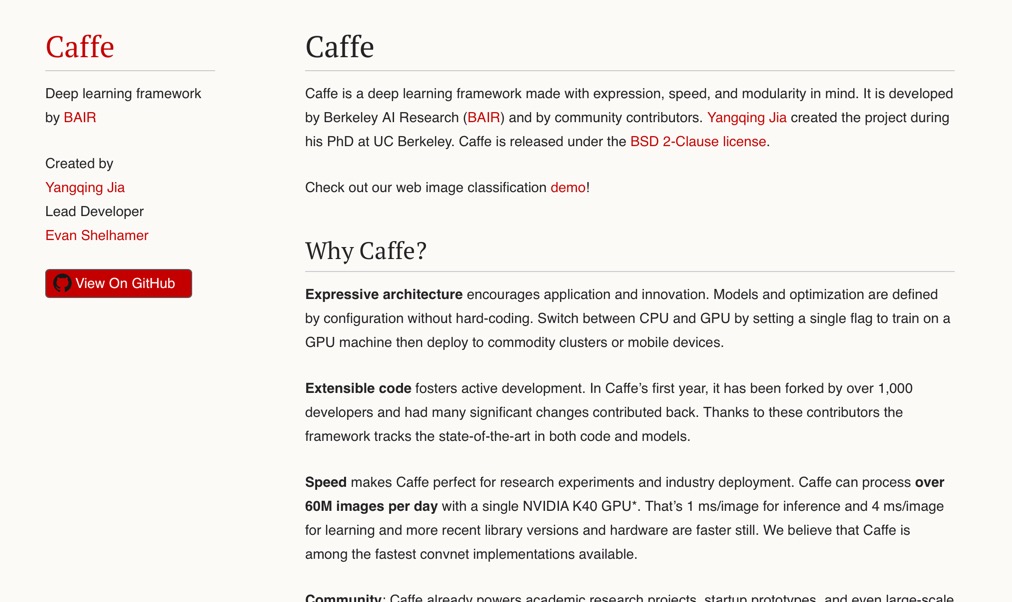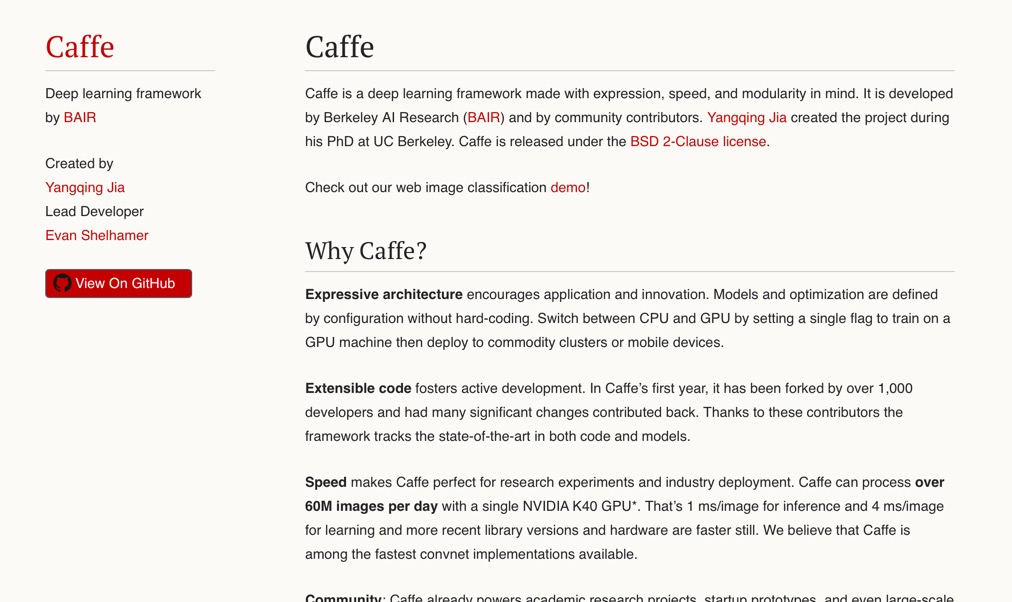











Caffe是一款由伯克利视觉与学习中心(BVLC)开发的深度学习框架,以其速度快、模型表达能力强和模块化程度高而广受欢迎。Caffe专为图像分类和卷积神经网络(CNN)的构建而设计,但也能够适应其他类型的机器学习任务。
核心特性:
- 高效的计算性能:Caffe通过优化计算图和内存管理,实现了快速的模型训练和推理,特别适合处理大规模数据集。
- 灵活的网络设计:Caffe允许研究人员和开发者自定义和组合网络层,为创新的网络架构提供了广阔空间。
- 丰富的预训练模型:Caffe提供了多个预训练模型,如AlexNet和VGGNet,这些模型在图像识别领域有着卓越的表现,可以用于迁移学习。
- 跨平台兼容性:Caffe支持多种操作系统,包括Linux和Windows,使得开发者可以在不同的环境下进行开发和部署。
应用场景:
Caffe在计算机视觉领域有着广泛的应用,包括但不限于图像分类、目标检测和视频分析。此外,它也被用于机器人技术、自动驾驶车辆的视觉系统等前沿科技领域。
总结:
Caffe以其高效的性能、灵活的设计和丰富的资源,成为了深度学习领域的重要工具。它不仅推动了图像识别技术的发展,也为机器学习研究提供了强有力的支持。
Caffe, developed by the Berkeley Vision and Learning Center (BVLC), is a deep learning framework renowned for its speed, strong model representation, and high degree of modularity. Designed specifically for image classification and the construction of Convolutional Neural Networks (CNNs), Caffe is also adaptable to other types of machine learning tasks.
Core Features:
- Efficient Computational Performance: Caffe achieves rapid model training and inference through optimized computation graphs and memory management, making it particularly suitable for processing large-scale datasets.
- Flexible Network Design: Caffe allows researchers and developers to customize and combine network layers, providing ample room for innovative network architectures.
- Rich Pre-trained Models: Caffe offers several pre-trained models, such as AlexNet and VGGNet, which have outstanding performance in image recognition and can be used for transfer learning.
- Cross-Platform Compatibility: Caffe supports multiple operating systems, including Linux and Windows, enabling developers to develop and deploy across different environments.
Application Scenarios:
Caffe has a wide range of applications in the field of computer vision, including but not limited to image classification, object detection, and video analysis. Additionally, it is utilized in cutting-edge technology fields such as robotics and the visual systems of autonomous vehicles.
Conclusion:
With its efficient performance, flexible design, and rich resources, Caffe has become an essential tool in the field of deep learning. It not only propels the development of image recognition technology but also provides strong support for machine learning research.









